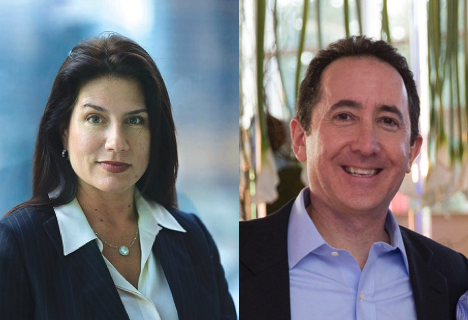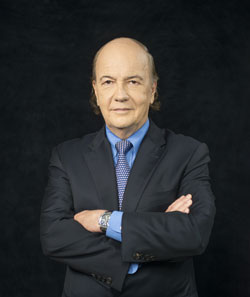Transcripts
 Patrick: I want to start this conversation with the FOMC statement and the rate cut that occurred.
Patrick: I want to start this conversation with the FOMC statement and the rate cut that occurred.
Danielle, you were on our show on the All-Stars episode before the FOMC meeting. You talked about this as a historic rate cut and that, potentially, it was the onset of a potential new currency war – which you completely nailed. It was a great call that you made.
But, now that this is rearview mirror, what is your impression of the reactions after the FOMC? And what are we looking at here going into the September meetings?
 Erik: Gold is on everyone’s mind this week and we’ve got a gold heavyweight for you for today’s feature interview. I’m joined now by Ronnie Stöferle who is managing partner, founder, and fund manager for Incrementum.
Erik: Gold is on everyone’s mind this week and we’ve got a gold heavyweight for you for today’s feature interview. I’m joined now by Ronnie Stöferle who is managing partner, founder, and fund manager for Incrementum.
He’s also probably best known as the principle author of In Gold We Trust, which is probably one of the most respected – I think it’s annually re-published documents – that really makes the whole fundamental case. If you haven’t read it yet, I strongly recommend it, and we do have it linked to your Research Roundup email.
Ronnie, thanks so much for joining us. I want to dive into some fairly advanced topics today. But, just for the benefit of any newer listeners who may not be familiar with the high-level picture, let’s start with gold.
Why is it so important? I’m convinced it will be the asset to own in the next decade. But let’s hear it from you, your perspective. Why will we care about gold in our portfolios?
 Erik: Joining me now is Mark Cudmore, the Global Managing Editor for Bloomberg’s Markets Live blog.
Erik: Joining me now is Mark Cudmore, the Global Managing Editor for Bloomberg’s Markets Live blog.
Mark, it’s great to have you back on. I’m going to have to apologize to you because the last time we had you on we recorded your interview on an FOMC week, before the FOMC meeting, so we didn’t have the benefit of knowing the outcome. We learned a lesson and we promised ourselves we would never do that again. And it’s you that we did it to again. So I apologize. And I’ll ask our listeners to understand that Mark and don’t know, because we taped this ahead of time, what the outcome will be from the FOMC.
But let’s go ahead and dive in and start with the global growth outlook for the global economy. My view is that we’re seeing awfully strong slowing signs. But a lot of people have different views.
What’s the big picture? How do you see this economy?
 Erik: Joining me now is Dr. Peter Warburton, Director and Chief Economist for Economics Perspectives Limited.
Erik: Joining me now is Dr. Peter Warburton, Director and Chief Economist for Economics Perspectives Limited.
Dr. Warburton, it is such a pleasure to get you on the program, because something I have been thinking about for years and, frankly, people ridicule me about, is it seems to me like if you look at all of the policy decisions of the last several years and the people who have criticized them – myself included – it seems to me like what’s going on is we can get away with these things until inflation gets in the way.
And once we have an inflation problem, all of a sudden central bankers can’t just paper over our problems by printing more money because it would exacerbate the inflation. But most people think inflation, hey, we haven’t had it in recent history. We’ve had a deflationary backdrop. It’s not a problem.
You gave a presentation back at the end of June called Blowing up the box! And what I really like about this is your perspective resonates so well with mine – that if you want to understand inflation you can’t just think about past history. You’ve got to think about not just the economics but also the political environment.
 Erik: Joining me now is Jim Rickards, best-selling author. And Jim has a brand-new book coming out next week. It’s available now for pre-order on Amazon and through other outlets. The title of the book is Aftermath: Seven Secrets of Wealth Preservation in the Coming Chaos.
Erik: Joining me now is Jim Rickards, best-selling author. And Jim has a brand-new book coming out next week. It’s available now for pre-order on Amazon and through other outlets. The title of the book is Aftermath: Seven Secrets of Wealth Preservation in the Coming Chaos.
Jim, thanks so much for joining us.
I want to start with what I think is really the core issue behind just about everything else we talk about in economics, which is burgeoning debt around the world. And I think sovereign debt is what we tend to focus the most on.
But, frankly, the private debt problem is just as big. And I feel like the world ignores this. The question that is always on my mind – at what point do we get to where the breaking point is reached and the bad predictions that all the smart people like yourself have been making for decades, finally we hit that breaking point and things start to break?
So give us a little bit of perspective. I know you cover this early in the book about how there has been a progression of debt increase, and it’s not linear. So give us the back story.
MACRO VOICES is presented for informational and entertainment purposes only. The information presented in MACRO VOICES should NOT be construed as investment advice. Always consult a licensed investment professional before making important investment decisions. The opinions expressed on MACRO VOICES are those of the participants. MACRO VOICES, its producers, and hosts Erik Townsend and Patrick Ceresna shall NOT be liable for losses resulting from investment decisions based on information or viewpoints presented on MACRO VOICES.
